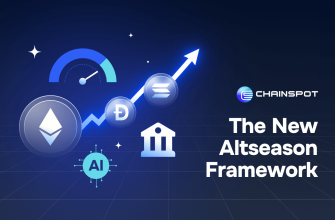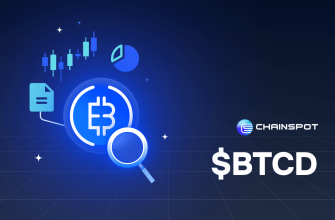- TL;DR (2 minutes)
- 1) The market tape: a healthy trend met a macro left hook
- 1.1 Before the hit: the “access bid” was in control
- 1.2 Oct 10: how a policy tweet roars through perps
- 1.3 Microstructure under stress: “candles to zero” and OTC shock absorbers
- 1.4 After the wash: fast stabilization, selective bounce
- 2) Policy & macro: why this fortnight felt like “crypto as macro beta”
- 3) Flash-crash post-mortem: the mechanics you can actually act on
- 3.1 Liquidation engines did their job—perhaps too quickly
- 3.2 Oracles, indices, wrappers
- 3.3 Who kept the market from breaking?
- 4) Sector snapshots (what moved and why)
- 5) The ETF & index angle: why “access” mattered even in a crashy fortnight
- 6) Guidance you can use (so your account survives the headline of the month)
- 6.1 Positioning, leverage, and sizing
- 6.2 Order types & timing
- 6.3 Venue plumbing & instruments
- 6.4 Liquidity staging & route costs
- 7) What changed because of Oct 10 (and what to watch into month-end)
- 8) Mini-recaps of relevant Chainspot reads (for context and tools)
- 9) A trader’s one-page checklist for the next two weeks
- 10) Bottom line
- Sources (selected)
Short version: The first half of October crammed a month’s worth of catalysts into 15 days. On Oct 10, a macro shock out of the U.S.–China standoff met record derivatives leverage and brittle venue plumbing, producing a historic liquidation cascade—press counts ranged from $16B in long liquidations to ~$20B total wiped in <24 hours. OTC desks acted as shock absorbers; altcoins on some books printed “near-zero” wicks; and one major exchange pledged $283M in user compensation for depeg/flash-print losses. At the same time, the ETF regime in the U.S. broadened thanks to “generic listing standards,” and XRP/DOGE ETFs that listed in mid-September kept the “access” narrative alive into Q4. Flows stayed powerful into early October before the macro hit; after, liquidity returned surprisingly fast. If you trade catalysts, this fortnight underlined one thing: execution costs and route choice are PnL.
When you need to pivot chains after a shock or into a listing: route your swap + bridge in one click with Chainspot, keep fees minute, and stack loyalty cashback (plus referral rebates).
Move smart → https://app.chainspot.io
TL;DR (2 minutes)
-
Macro spark → cascade. On Oct 10, tariff threats from Washington (100% on Chinese imports) and Beijing’s export-control salvos rattled global risk. Crypto sold off with equities, then self-reinforced through forced unwinds as leverage tripped liquidation engines. Reports tallied $16B in longs liquidated (CoinDesk) and nearly $20B total across venues (Cointelegraph).
-
Venue plumbing stress. Some alt books printed “zero” or near-zero ticks on one venue while trading saner elsewhere—symptom of fragmented liquidity during freezes. One top exchange announced ~$283M in compensation tied to the event. OTC desks were credited as shock absorbers that prevented broader contagion.
-
Policy drumbeat. The U.S. SEC’s “generic listing standards” (Sept 17–19) continue to bear fruit: XRP and DOGE ETFs launched in mid-September; issuers filed slates of additional products, and CME floated options additions.
-
Flows stayed heavy. In the week ending Oct 4, global crypto ETPs saw a record $5.95B inflow (CoinShares), overlapping with BTC’s fresh ATH on Oct 5—before the macro shock.
-
Aftermath tone. By Oct 15, officials and press framed US–China tensions (rare-earth controls, tariffs) as a new growth risk; energy shipping costs spiked. Those headlines explain why crypto traded “macro beta” this fortnight.
1) The market tape: a healthy trend met a macro left hook
1.1 Before the hit: the “access bid” was in control
Through late September and into the first week of October, flows into listed products were robust: CoinShares flagged record $5.95B into global crypto ETPs for the week ending Oct 4, led by U.S. vehicles. BTC notched a new ATH around Oct 5. The broadened ETF shelf—now including XRPR (XRP) and DOJE (DOGE) products listed mid-September—kept bringing non-crypto-native money to the table.
Under the hood, open interest grew as traders re-levered on strength. Nothing unusual—until a political headline flips the script.
1.2 Oct 10: how a policy tweet roars through perps
On Friday, Oct 10, President Trump’s 100% tariff warning on Chinese imports collided with Beijing’s tightening stance on rare-earth export controls. Equities jolted; crypto tracked. As BTC cut through near supports, maintenance margins got breached and forced sells accelerated the move. CoinDesk tallied $16B in long liquidations—its biggest print of 2025—while other round-ups put total liquidations across both sides near $20B over the Oct 9–10 window.
1.3 Microstructure under stress: “candles to zero” and OTC shock absorbers
During the most violent 15–30 minutes, thin books on select pairs couldn’t absorb forced order flow; some altcoins printed near-zero ticks on one venue while prices elsewhere remained far from zero. Post-event analysis from multiple outlets, and acknowledgment by a major exchange, point to module interruptions and fragmented liquidity as culprits. That venue later said it completed ~$283M of compensation within 24 hours for users harmed by depegs/prints. Meanwhile, a new CoinDesk piece highlighted that OTC desks backstopped liquidity, containing what could have become an even wider contagion.
1.4 After the wash: fast stabilization, selective bounce
By Oct 11–13, coverage tracked a whipsaw: BTC’s round-trip from ~$103K lows back above $115K within ~72 hours as tariff rhetoric softened intraday. The message from those recaps was simple: 2025’s dip-and-rip regime is still alive—but only if your account survives the flush.
2) Policy & macro: why this fortnight felt like “crypto as macro beta”
-
US–China escalation dominated: export controls chatter (rare-earths), tariff threats, and knock-on effects like VLCC freight rates spiking as shipping routes rerouted. Fed Governor Stephen Miran called renewed tensions a downside growth risk and argued for faster rate cuts, framing the macro mix that risk assets were pricing.
-
ETF regime shift kept building: the SEC’s “generic listing standards” (Sept 17–19) allow exchanges to list qualifying spot-commodity ETPs—including crypto—without bespoke 19b-4 approvals. That’s why we got XRPR/DOJE in September and a queue of filings in early October (including multi-asset slates). The timeline from filing to listing can now compress to ~75 days.
-
Derivatives market depth spread across venues remains the swing factor. CME’s notice that it plans to list options on XRP and SOL futures (Oct 13, subject to approvals) is another tile in the “institutional rails” mosaic—important for hedgers after flash events.
So what? When geopolitics flares, crypto behaves like a high-beta macro asset—until crypto-native flows (ETF allocations, staking/rollup activity) reassert themselves. The first half of October showcased that tug-of-war.
3) Flash-crash post-mortem: the mechanics you can actually act on
3.1 Liquidation engines did their job—perhaps too quickly
Risk engines are designed to sell collateral fast once your equity falls below maintenance margin. On a quiet day that’s fine; on a panic day it snowballs. Coverage documented multi-billion liquidation clusters in tight windows. If you size trades for normal volatility, you get auto-sold in abnormal volatility.
Actionable: On macro days, cut leverage pre-event; switch alts → isolated, majors cross only if hedged, and pre-place reduce-only brackets.
3.2 Oracles, indices, wrappers
During the flush, some synthetic yield wrappers and staked assets momentarily depegged; post-mortems (and even exchange blogs) tie parts of the carnage to oracle/index mismatches and venue-local liquidity vacuums. The founder of a top exchange publicly argued that certain yield wrappers (e.g., USDe) shouldn’t be treated as “stablecoins” in risk engines—they’re structured products with hedge mechanics that can wobble under stress.
Actionable: Treat wrappers as risk assets. If your perp/spot hedges reference different indices, size down; know the oracle mix (TWAP vs fast feeds).
3.3 Who kept the market from breaking?
A timely read notes OTC desks acted as shock absorbers, catching large blocks while order books choked. For active funds, it’s a reminder: maintain multiple execution pipes for stress hours; don’t rely on a single venue.
4) Sector snapshots (what moved and why)
-
BTC/ETH: Took the hit, then stabilized first—consistent with the ETF flow regime. BTC set a new ATH Oct 5 and then retraced; ETH tracked but with lower beta into the bounce as options markets repriced.
-
L2s & rollups: Flows cooled on event day but quickly normalized where fees + uptime stayed predictable. Reliability headlines from September kept investors picky about where to LP or farm; smooth throughput in October is the KPI that attracts sticky TVL. (Context from Sept remains relevant.)
-
SOL stack: High-throughput narratives remain catalysts; every hint of client progress or new app waves invites rotation—tempered during the macro window but not derailed.
-
Meme/celebrity tokens: Whipsaw city. They’re liquidity sponges when risk is “on,” and illiquid traps when it’s “off.” Funding and book depth matter more than the meme on event days.
5) The ETF & index angle: why “access” mattered even in a crashy fortnight
-
Generic standards are a genuine regime change: exchanges can list qualified spot-commodity ETPs without bespoke approvals—smoother, faster, broader. Several legal memoranda and Commissioner Hester Peirce’s statement underscore the significance.
-
XRP/DOGE ETFs that listed Sept 18 (XRPR, DOJE) weren’t pure “hold the coin” structures but still drew real volume day one, signaling demand beyond BTC/ETH.
-
CME options plans around XRP/SOL (Oct 13 target) extend hedge tools institutions want in exactly the weeks we just had.
-
S&P Digital Markets 50 index launch (last week) hints at blended stock-and-crypto exposure products coming—more on-ramps for allocators who like baskets over single-names.
Takeaway: Access products don’t stop flash events—but they pull liquidity back faster after shocks. That’s part of why the Oct 11–13 snapback didn’t take weeks.
6) Guidance you can use (so your account survives the headline of the month)
6.1 Positioning, leverage, and sizing
-
1–2% risk per idea still rules. If you “size because it’s cheap,” you’re volunteering to fund someone else’s bottom tick.
-
Isolated on alts; cross on majors only with hedges.
-
If a macro headline is scheduled (tariffs presser, Fed talk, CPI), trim before the time window; widen stops or stand aside into the minute of the release.
6.2 Order types & timing
-
Enter with limits/post-only; exits reduce-only by default.
-
Avoid the minute before/after funding windows and the exact headline timestamp; split entries via TWAP. These two rules alone would have saved many accounts on Oct 10.
6.3 Venue plumbing & instruments
-
Prefer venues that publish risk-engine docs (maintenance tiers, ADL order).
-
Treat wrappers (staked assets, synthetic dollars) as risk—not cash. On Oct 10 they proved it.
-
Keep two execution routes: order-book venue + OTC/RFQ for blocks.
6.4 Liquidity staging & route costs
-
Pre-fund gas and stables on two chains you actually use (your main venue chain + your backup chain).
-
Routing costs matter: during panic, manual “bridge then DEX” often costs 2–3× more in bps and time. Use an aggregator that does swap+bridge in one.
Practical CTA: Chainspot searches multiple bridges + DEXes for the cheapest combined route, executes in one click, and credit(s) you cashback in a loyalty vault (referral share when friends route). In event weeks—listings, airdrops, crashes—those saved bps compound.
Try it → https://app.chainspot.io
7) What changed because of Oct 10 (and what to watch into month-end)
-
Venue responses: One large exchange publicly detailed module interruptions and completed a ~$283M compensation program within a day; others traded statements about freezes and books. Expect parameter changes (liquidation throttles, auction bands) and post-mortems over the next week.
-
Oracle/index hardening: Providers and venues are being pressed to use multi-source indices and stress-mode TWAP clamps to avoid “orphan” prints. Watch for comms from the usual oracle teams this month.
-
Flows re-accumulating: ETP inflows into early October were huge; the question now is how quickly they rebuild after the flush. History says: if macro softens, they come back.
-
US–China rhetoric: Treasury and Fed officials flagged trade tensions as a new downside risk; freight and rare-earth headlines will keep intraday risk elevated. If de-escalation chatter firmed up before month-end, beta would breathe.
8) Mini-recaps of relevant Chainspot reads (for context and tools)
-
BlackFriday’25 — What Really Happened (Oct 10): Deep dive into the mechanics of the liquidation spiral, wrapper depegs, and a survival kit you can copy next time. (Pairs well with today’s wrap.)
-
Hyperliquid 101: How to trade a fully on-chain order-book L1: margin modes, fees/funding, order types, liquidation behavior, and checklists for first trades.
-
$HYPE Ideas — Degen Playbook: Ten concrete edges (funding-flip fades, maker rebates, weekend wick traps, event microstructure) and bankroll rules for not blowing up.
-
Q4 Outlook: Macro dates (FOMC late Oct & mid-Dec), the new ETF regime, sector leaders/laggards, and execution checklists.
Each piece hammers the same theme: your costs and routes are the difference between “right idea” and actual PnL. Keep a Chainspot tab open during event weeks.
👉 Bridge & swap smarter (cashback + referrals): https://app.chainspot.io
9) A trader’s one-page checklist for the next two weeks
-
Calendar risk: note tariff/rare-earth presser windows; add Fed speakers/CPI.
-
Trim gross into known macro; alts on isolated, majors cross w/ hedge.
-
Pre-fund gas/stables on two chains.
-
Limit + post-only entries; reduce-only TPs; TWAP on adds.
-
Avoid funding window & headline minute for new entries.
-
Journal: thesis, size, funding, exit.
-
Route any cross-chain pivot via Chainspot (one-click swap+bridge, cashback).
-
Debrief weekly: What made/paid? What cost basis points?
10) Bottom line
Oct 1–15, 2025, will be remembered for two truths. First, access wins: new ETFs, legal clarity, and institutional rails pulled fresh liquidity into crypto—right up until macro politics yanked the wheel. Second, plumbing matters: liquidation engines, oracles, and fragmented books can turn a selloff into a cascade; but robust OTC and better indices can limit the blast radius.
You can’t control geopolitics. You can control leverage, order types, and how cheaply you move capital when the tape swings from green to red and back again. Keep a Chainspot route ready so your capital is where it needs to be—fast, cheap, and with cashback padding your PnL on every rotation.
Move between chains the smart way (and get paid for it): https://app.chainspot.io
Sources (selected)
-
Liquidations: CoinDesk on $16B longs; Cointelegraph on ~$20B over Oct 9–10.
-
US–China macro shock: WSJ live blog on 100% tariff threat; FT/Reuters on rare-earth controls and freight spike; Fed Gov. Miran on growth risks.
-
Venue responses: Binance community post noting $283M compensation; round-ups on exchange freezes/blame.
-
OTC as shock absorber: CoinDesk post-mortem citing OTC desks’ role.
-
Wrappers/oracles: commentary and reports around USDe behavior and oracle stress.
-
ETF regime: SEC Commissioner Peirce on “generic listing standards”; legal memos; CoinDesk/Yahoo coverage of XRPR/DOJE; CME note on XRP/SOL options.
-
Flows: Reuters on record $5.95B weekly inflows (week to Oct 4).
-
Index: S&P Digital Markets 50 launch (Barron’s).
This wrap is for information only and not investment advice.











